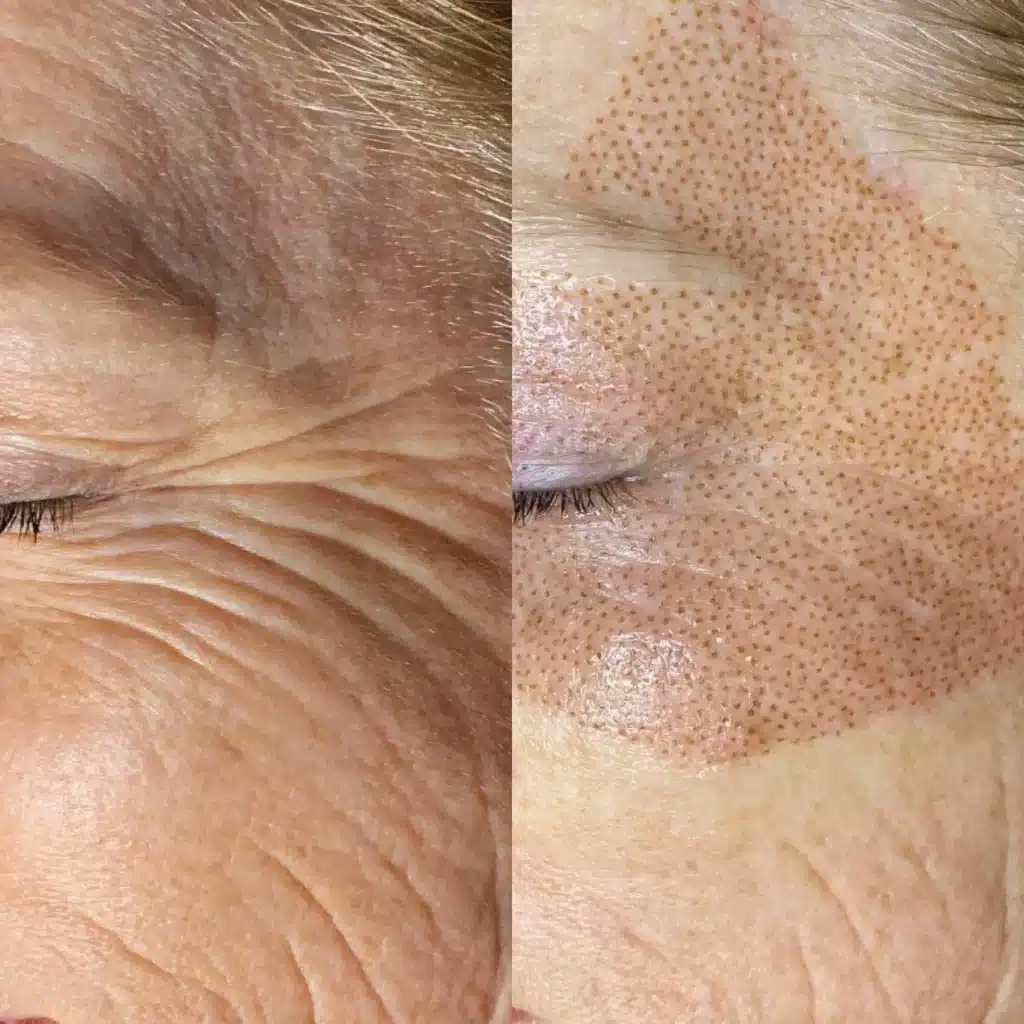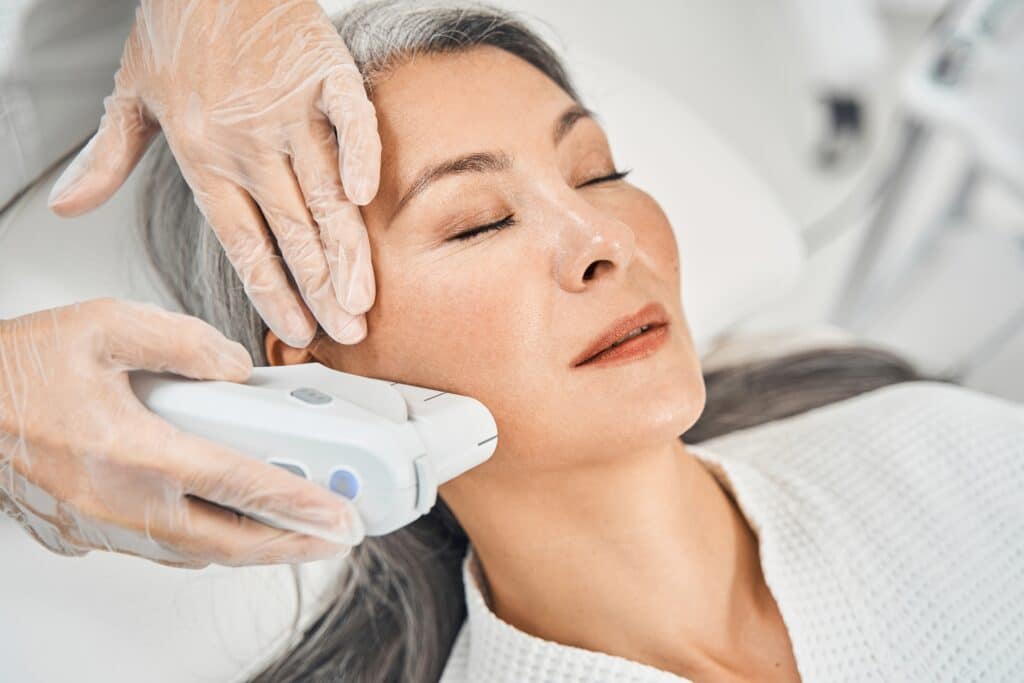Intense Pulsed Light (IPL) therapy is a non-invasive skin treatment that uses high-intensity pulses of light to target various skin concerns, including pigmentation, redness, acne, and fine lines.
IPL works by emitting light at different wavelengths (usually between 500 and 1200 nanometers), which penetrate the skin at varying depths. The device used for IPL has a handpiece that emits this light in short pulses. These pulses are absorbed by specific pigments in the skin, such as: Melanin: Found in pigmentation issues like sun spots, age spots, and freckles. Hemoglobin: Found in blood vessels, making IPL effective for vascular concerns such as rosacea, broken capillaries, and redness. Collagen: The light can also stimulate collagen production, helping to improve skin texture, fine lines, and overall skin tone. The light is absorbed by the targeted areas, which either causes pigment to break down or stimulates the skin’s natural healing processes, resulting in smoother, clearer, and more even-toned skin over time.
Before the treatment, you will need to be seen for a consultation with our trained laser technician who will assess your skin type, specific concerns, and determine if IPL is the right treatment for you. IPL treatment is non-invasive, but preparation is key. The area to be treated should be clean and free of any makeup, lotions, or other products. A cooling gel may be applied to protect the skin and enhance the light absorption. In some cases, the practitioner may apply a topical numbing cream to minimize discomfort, especially for sensitive areas. During the procedure, the IPL device is moved over the targeted area, emitting light pulses onto the skin. Each pulse lasts only a fraction of a second, and you may feel a mild snapping or tingling sensation as the light is applied. The treatment usually lasts anywhere from 15 to 45 minutes, depending on the size of the area being treated.
IPL is suitable for many individuals with various skin concerns. However, it’s most effective for those with lighter skin tones (Fitzpatrick skin types I to III). IPL may not be as effective for darker skin tones, and in such cases, a more specialized treatment like fractional laser or a different type of light therapy may be recommended. Good candidates for IPL include those who have: Sun spots, age spots, or freckles, Rosacea or redness, mild acne or acne scars, fine lines and wrinkles, and uneven skin tone and texture.

The number of IPL sessions required depends on the skin concern being treated: Pigmentation Issues: Multiple sessions (usually 3 to 5) may be needed to see significant improvements in sunspots, freckles, or melasma. Rosacea or Redness: 3 to 6 sessions may be necessary to reduce redness or treat broken capillaries. Acne: Treatment may require 4 to 6 sessions to see significant improvement in acne and acne scars. Skin Rejuvenation: For overall skin texture improvement and fine lines, 4 to 6 sessions spaced a few weeks apart are typical.

After the treatment, there may be some redness or mild swelling in the treated area, similar to a mild sunburn. These side effects typically subside within a few hours to a couple of days. Patients are advised to avoid sun exposure for a few weeks after the procedure and wear sunscreen to prevent hyperpigmentation. Makeup can typically be applied immediately after treatment, but it’s essential to follow aftercare instructions provided by the practitioner.
The cost of IPL treatment can vary depending on factors like the size of the area being treated and the number of sessions required.
Harmony XL Pro
© 2025 The Beauty Loft Med Spa | All Rights Reserved | Powered By Consumr Buzz